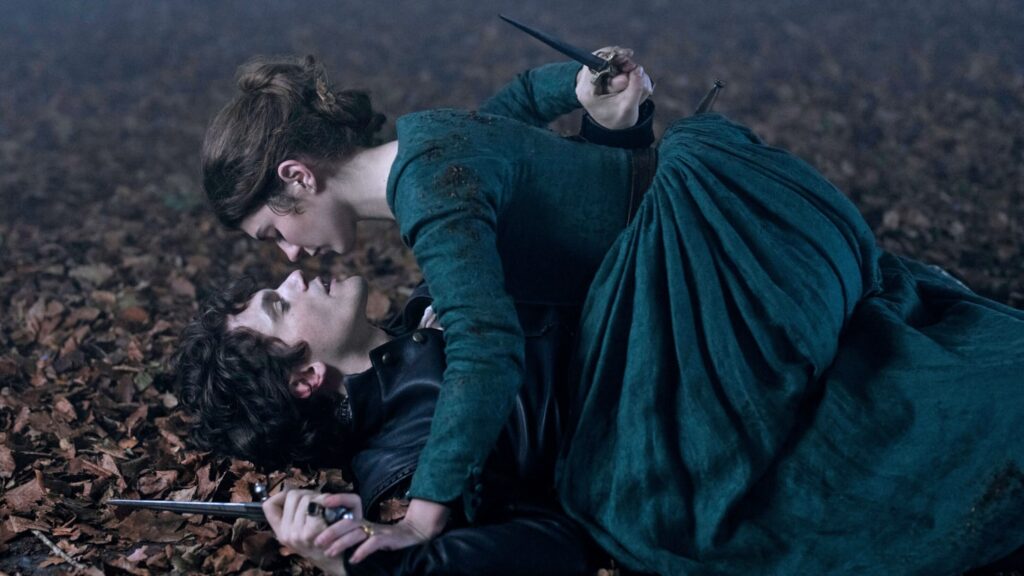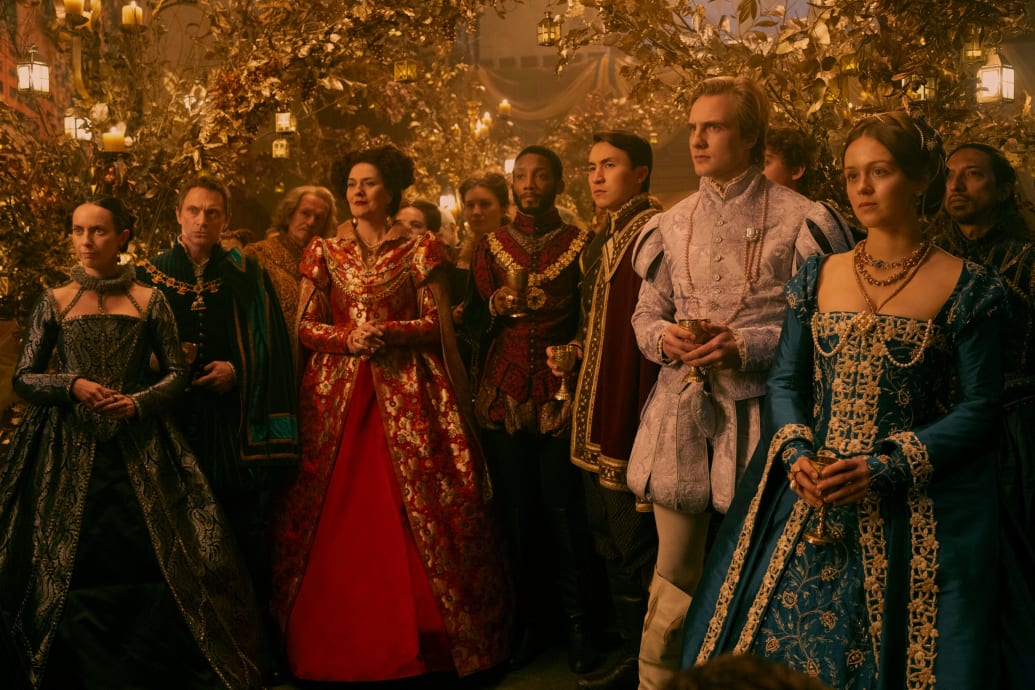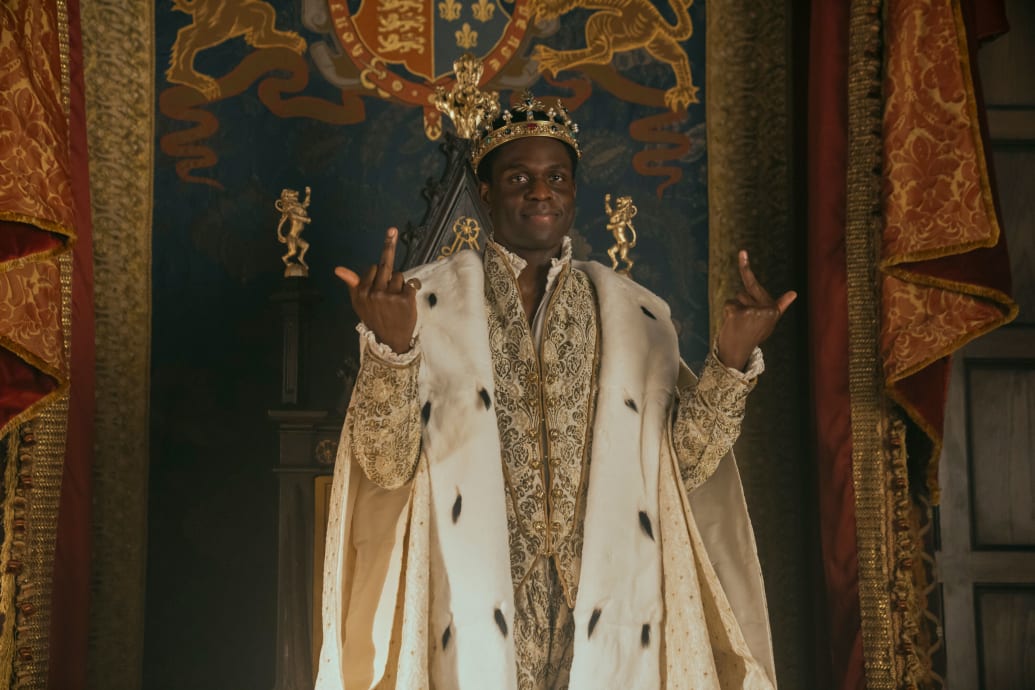“We’re all born with a role, a destiny,” explains a character in an early episode of My Lady Jane, Prime Video’s new take on old tales of historical upheaval, court intrigue, and social evolution. It’s the same old thing in stories where women are pawns in a game for a man’s throne, ruled, married off, exiled, or executed at the whims of those in power, doomed to a life of subservience that was preordained from birth. The rest of My Lady Jane asks, what if that didn’t happen, what if some people could magically transform into animals?
The show is based on a book by a trio of authors, Brodie Ashton, Cynthia Hand and Jodie Meadows. The series, which originates from the 2016 novel of the same name, reimagines the life of Jane Grey, an aristocrat who rose to the throne of England after the death of her great-uncle Henry VIII and then his son Edward VI. Edward VI continued the Protestant Reformation of the Church of England, and as Jane was a Protestant, he knew she would continue it after his death. In reality, Queen Jane ruled for a total of nine days before being executed as a heretic, and Edward’s half-sister Mary, a Catholic, became queen instead. “Fuck that,” the show’s narrator sarcastically says in the first episode. “What if history had been different?”
Kate O’Flynn as Princess Mary, Will Keane as Norfolk, Jason Forbes as Scrope, Brandon Grace as William, Henry Ashton as Stan Dudley, and Isabella Brownson as Catherine Grey.
Jonathan Prime/Amazon Prime
My Lady Jane exists in an alternate reality to ours, populated by an aristocracy that rules society, and an underclass of magical shapeshifters called “Essians” who are persecuted by the government when their abilities are discovered, in a blatant racist/homophobic/apartheid metaphor. Think Wicked, but Carnival Row-style. Jane Grey (a sharply observant and stately Emily Bader), a botany enthusiast and relative of an ailing king, is not one of these people. Her problem is simpler: her tyrannical mother, Lady Frances (a terrifying Anna Chancellor), is hell-bent on marrying off Jane to secure a living for the family after the death of Jane’s father. Jane’s unwanted marriage to Lord Guilford Dudley (a passionate Edward Bluemel), the son of the schemer Lord Dudley (Rob Brydon, wearing a tiny pearl earring), unwittingly leads her down a path of terrible secrets and court intrigue as she uncovers a plot to assassinate the King.
My Lady Jane feels like a spiritual sibling to shows like Dickinson and The Great. It unfolds a new story from a framework of historical fact with a mischievous, modern tone that spurns the shackles of reality. This Lady Jane is (probably) not doomed, because this world has animal people and we, the viewers, have a much more evolved view of women’s place in society. The show’s events are expertly observed by a slightly irritating narrator who injects plot context when he needs to (and often when he doesn’t), muttering “Oh, damn it” whenever something bad is about to happen. At the beginning of the first episode, he quotes the mantra from the Broadway musical “Six.” “Divorce. Behead. Death. Divorce. Behead. Survive.” In each episode, riot grrrl covers male-fronted rock songs such as The Beatles’ “Come Together” and Led Zeppelin’s “Kashmir,” and the characters routinely slang modern words like “Fuck that” rather than “thee” or “thous.”
Jordan Peters as King Edward.
Jonathan Prime/Amazon Prime
Nonetheless, the show stays true to its source material in terms of its vague historical outlines: Jane marries Guildford Dudley, the country is shaken by the death of King Edward, and Jane eventually faces off against Bloody Mary Tudor (played with shrill caricature by Kate O’Flynn). The sets and costumes are lavish and detailed, faithful to the period, including white powder and high collar. The cinematography is a soft-focus sheen that highlights the sparkling jewels of the crown and the roaring flames of the executioner’s pyre. But the similarities end there, and the fantasy elements take over.
It’s one thing to present an alternate history of Yass Queen that values female empowerment (the modern-day equivalent of social media) over historical accuracy, but quite another to get the audience to accept that in this alternate history the main political issue is whether humans who can transform into animals should be executed as witches. The Essian subplot seems to replace the Catholic vs. Protestant conflict that existed at the time, and there are no religious references in the show at all. But aside from the “so-and-so was an animal all along!” twist, the Essian subplot is rarely used to its full potential.
Ultimately, My Lady Jane is a strange mix between the sword-and-sorcery Game of Thrones and the historical drama The Tudors. It’s part of the current trend of period comedies, but there are elements that fall into more serious fantasy territory. It’s fun for viewers who like their historical novels with a little magic thrown in, and the instant chemistry between the two leads is enough to intrigue even those who are skeptical of the fantasy portion of the show. For those tired of 1:1 historical shows, My Lady Jane promises the unexpected.




